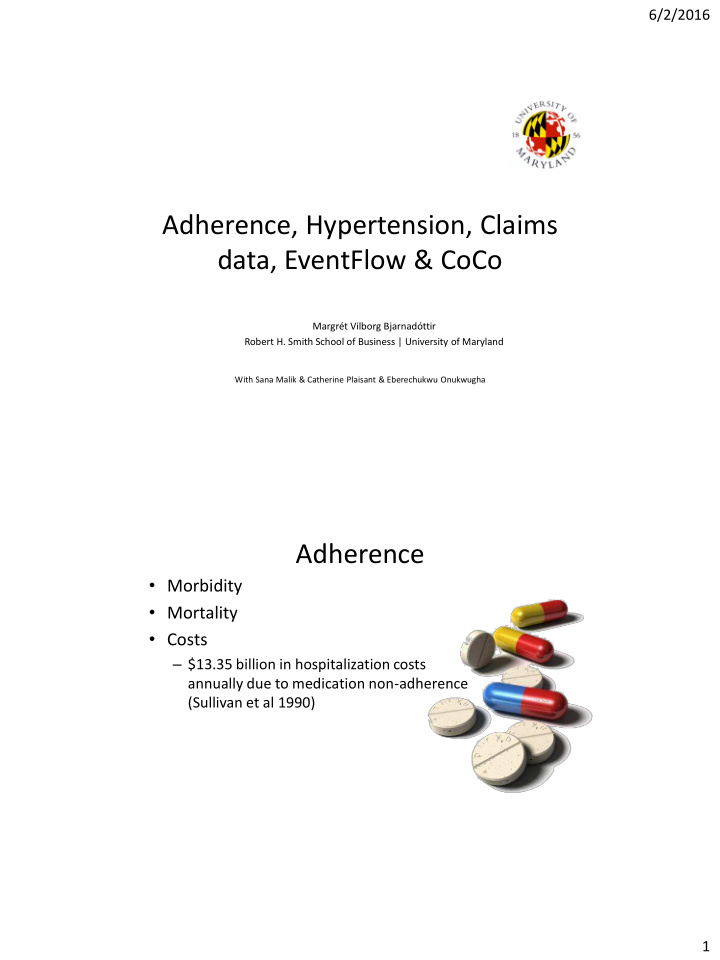



6/2/2016 Adherence, Hypertension, Claims data, EventFlow & CoCo Margrét Vilborg Bjarnadóttir Robert H. Smith School of Business | University of Maryland With Sana Malik & Catherine Plaisant & Eberechukwu Onukwugha Adherence • Morbidity • Mortality • Costs – $13.35 billion in hospitalization costs annually due to medication non-adherence (Sullivan et al 1990) 1
6/2/2016 Adherence Measurement • The medication possession ratio (MPR): days supplied = 83% length of observatio n period time Study end Study start The Data • 900,000 Individuals • 16 million prescription claims • 5 Drug classes: – Angiotension-Converting Enzyme-Inhibitors (ACE) – Angiotension II Receptor Blockers (ARB) – Calcium Channel Blockers (CCB) – Beta blockers (Beta) – Diuretics Michael A. Kane, Margrét V. Bjarnadóttir, Sanjay Ghimire . 2012. “Study of compliance in hypertension treatment ” American Society of Hypertension, Annual Scientific Meeting. Poster Presentation, New York, NY, May 2012. 2
6/2/2016 The Research Questions • Can we use visualization to understand adherence patterns – Can we derive new metrics/visualizations/knowledge – Can we make better prescription decisions Hypertension Treatment time 3
6/2/2016 Hypertension Treatment time Hypertension Treatment time 4
6/2/2016 The Research Questions • Can we use visualization to understand adherence patterns – Can we derive new metrics/visualizations/knowledge – Can we make better prescription decisions • What are the effects of our modeling decisions • Can we understand different subgroups better Hypertension Treatment time time 5
6/2/2016 Gaps & Overlaps Gaps & Overlaps 6
6/2/2016 Case study PATTERNS AND MODELING DECISIONS Event Flow 7
6/2/2016 General Patterns Diuretics Only - Gaps Modeling Decisions* 8
6/2/2016 Diuretics Only - Gaps Drilling Down with CoCo • Adherent vs. non-adherent • Ace-Inhibitors vs Diuretics 9
6/2/2016 10
6/2/2016 11
6/2/2016 12
6/2/2016 Summary • All of the standard data cleaning considerations apply and are necessary • CoCo can quickly compare two cohorts and give an overall feel the differences between the two groups margret@rhsmith.umd.edu 13
Recommend
More recommend